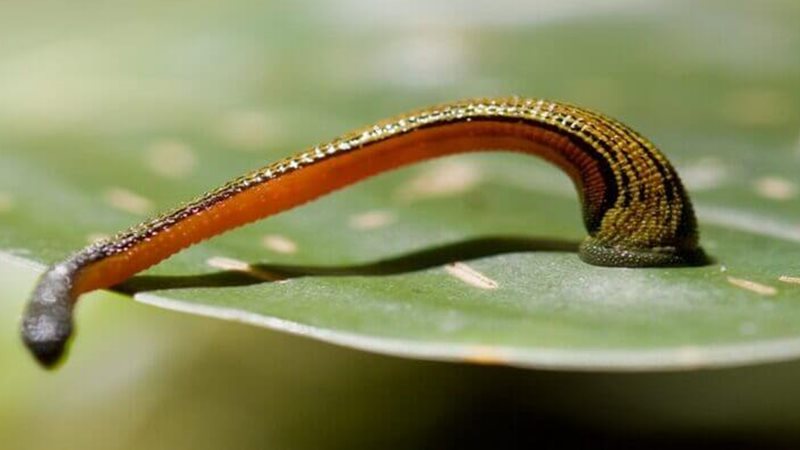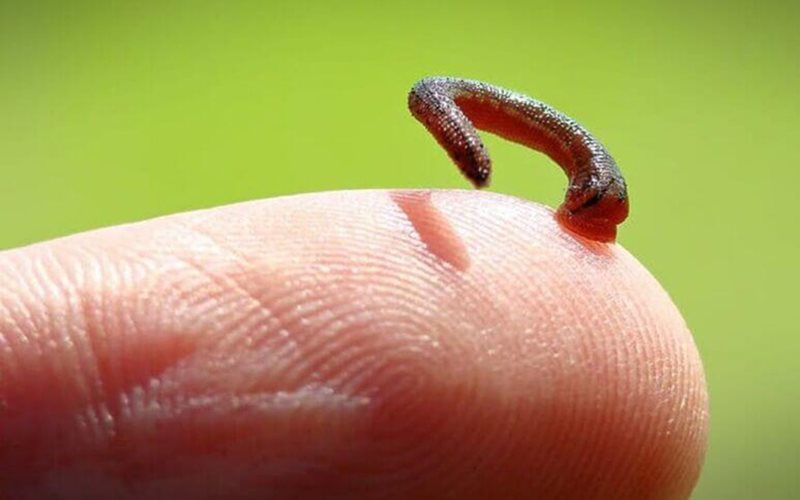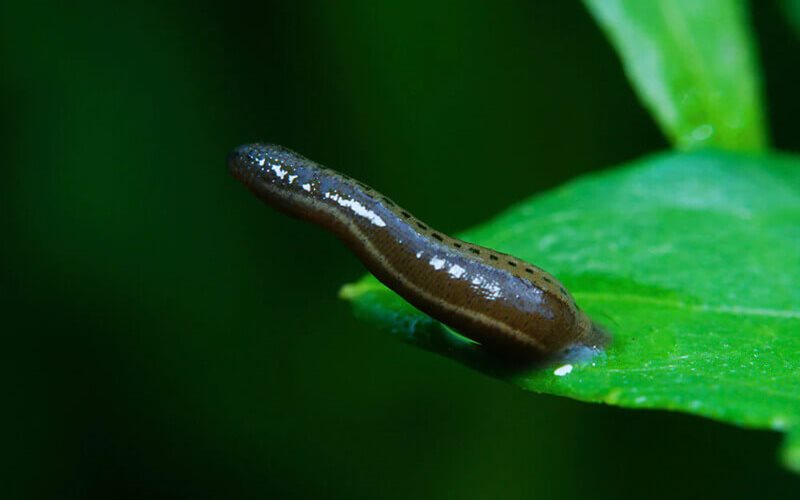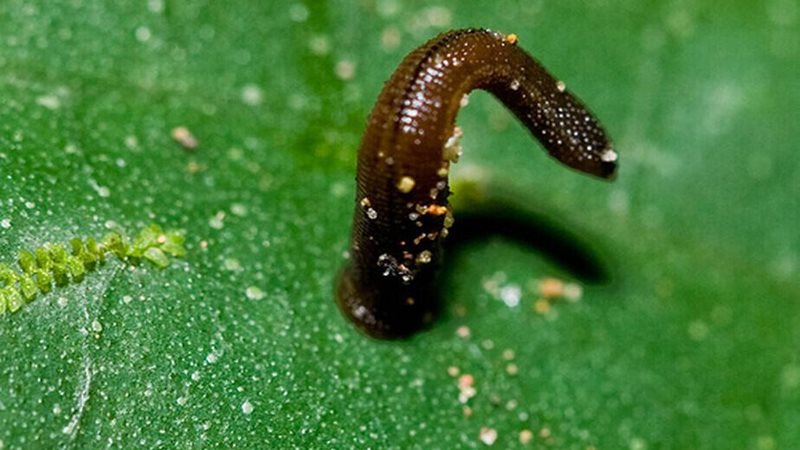Leeches are segmented worms that attach themselves to humans or animals to suck blood. While a leech bite is not particularly painful, it will cause continuous bleeding. To learn more about these creatures and how to protect yourself from leeches when hiking or trekking in the forest, read on.
1 What are Leeches? Characteristics and Features
 What is a Leech? Characteristics and Features
What is a Leech? Characteristics and Features
Leeches (scientific name: Heamadipsa) belong to the order Hirudinae, which includes leeches that live on land. They are typically small, ranging from 3-5 cm in length and weighing only about 100 mg. Leeches have a well-developed body structure, including a mouth, esophagus, stomach, and anus. When at rest, a leech’s body can contract to a length of just 2-3 cm, but when moving, it can stretch to twice that length.
Leeches have a tendency to attach themselves to other organisms and suck blood through their mouth cavity. While a leech bite is not extremely painful, it will cause the wound to bleed continuously.
Leeches are found in various parts of the world, but they are primarily concentrated in humid regions such as Southeast Asia, Africa, and South America. In Vietnam, there are currently four common species of leeches:
-
Black Leech: Also known as the land leech, they are usually found under layers of dry leaves on the ground and tend to attach themselves to legs, from the knee downwards.
-
Green Leech: This type of leech lives on leaves and approaches its prey by jumping onto them. They can attack humans in areas above the knee.
-
Dull Black Leech: Found mainly in the central region of the country, this species leaves deep cuts that cause prolonged itching due to their three-pronged, spear-like mouth cavity.
-
Yellow Leech: Predominantly found in the highlands, these leeches have a yellowish body with black spots along their length.
2 How to Protect Yourself from Leeches when Hiking or Trekking
 Ways to Protect Yourself from Leeches in the Forest
Ways to Protect Yourself from Leeches in the Forest
Wear Appropriate Clothing
When hiking or trekking, it is advisable to wear long, fitted clothing and tuck your pants into your socks. Additionally, consider using leech socks or applying tape to cover the area between your pants and socks. Wearing gloves can also provide some protection, even though leeches typically attack below the waist.
Use Repellents and Other Substances
Leeches are repelled by salty and bitter substances. You can apply salt or bitter-tasting substances to your shoes and clothing before venturing into the forest. If a leech attaches itself to you, applying salt or heat near the leech will cause it to release its grip quickly.
Other effective repellents include DEP, eucalyptus oil, salt, lime powder, or products containing DEET.
3 Quick Tips for Handling Leech Bites
 Tips for Dealing with Leech Bites
Tips for Dealing with Leech Bites
If you are bitten by a leech, remain calm and follow these steps to address the wound:
4 Precautions when Moving and Camping in the Forest
 Precautions for Camping and Moving in the Forest
Precautions for Camping and Moving in the Forest
Here are some additional precautions to avoid leech bites when in the forest:
-
Avoid sitting in one place for too long, especially in damp areas with a lot of leaves.
-
Do not relieve yourself in dense, damp areas.
-
When hiking or trekking, carry a first aid kit with bandages, saline solution, and antiseptic.
-
When camping, keep the area clean and free of dry leaves, and sprinkle salt around your campsite to deter leeches.
Today’s article has provided you with information about leeches and effective ways to protect yourself from them when hiking or trekking. We hope that you now feel more prepared to handle leeches and protect yourself effectively!
Source: umoveadventure.com































